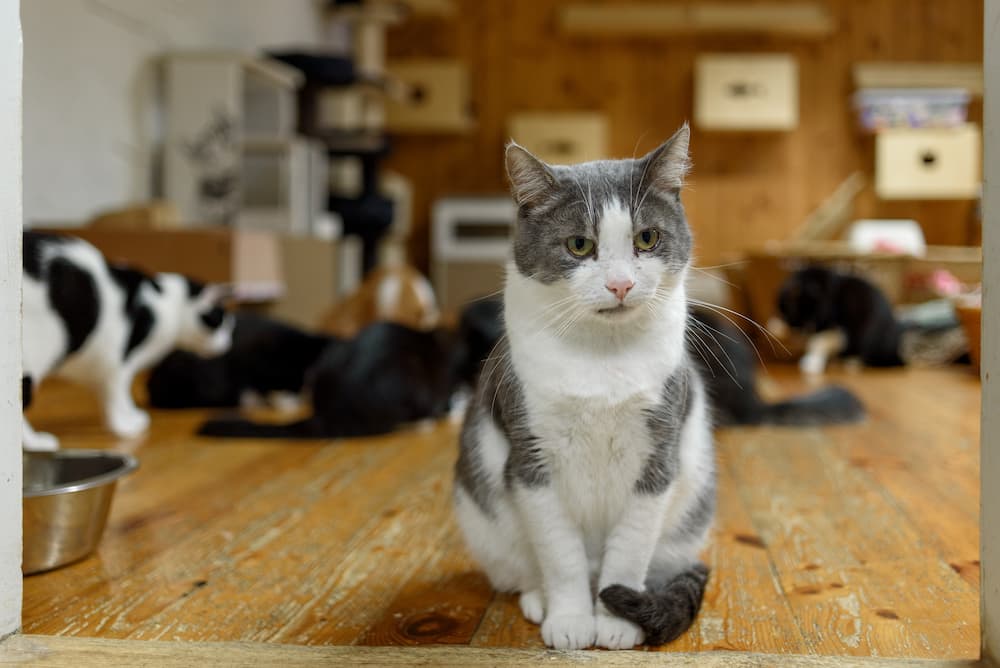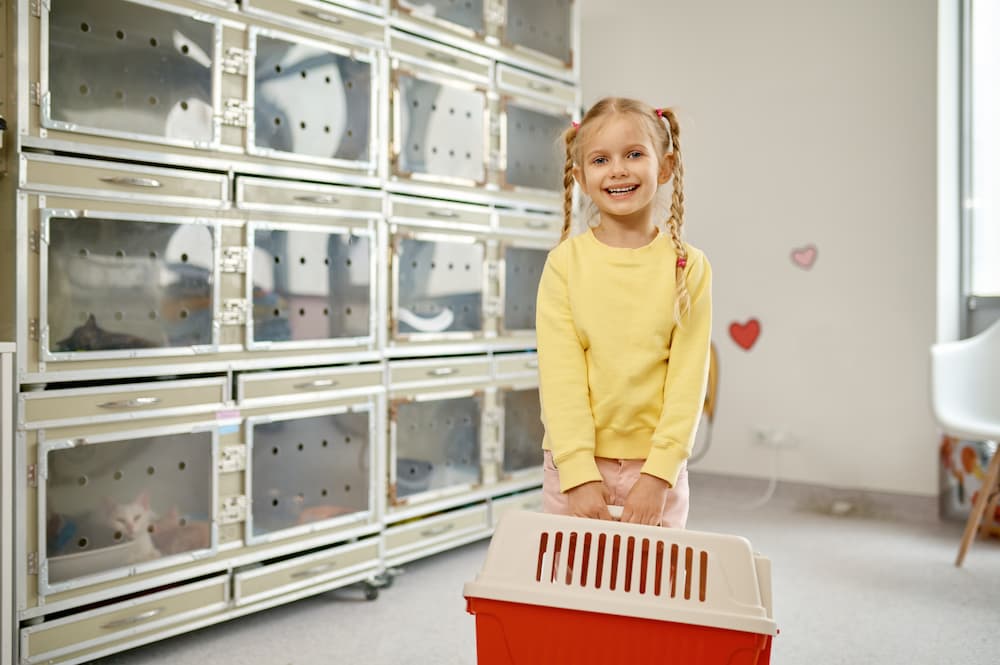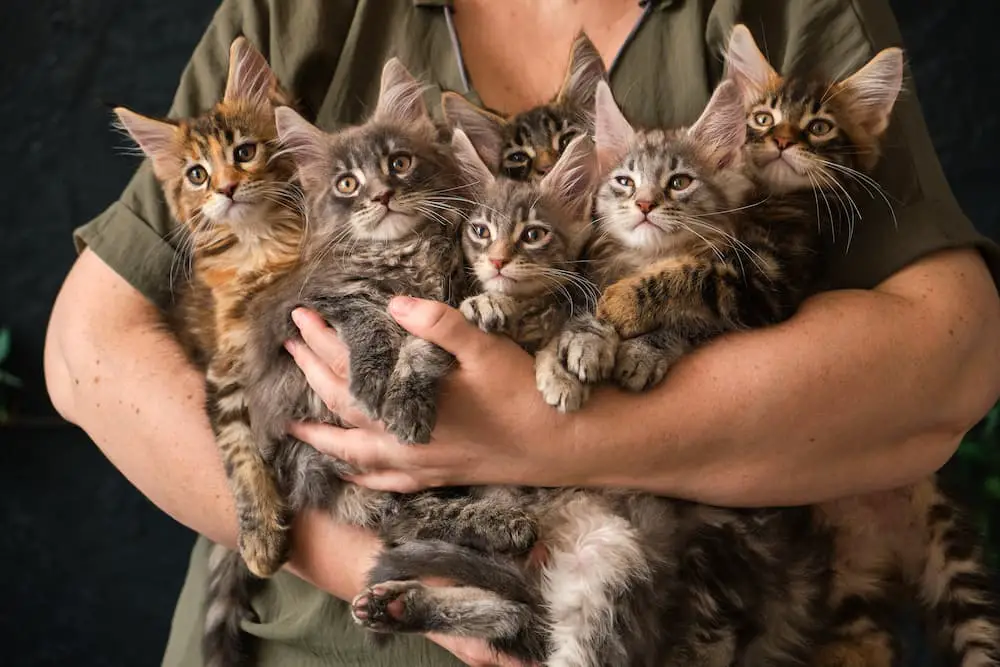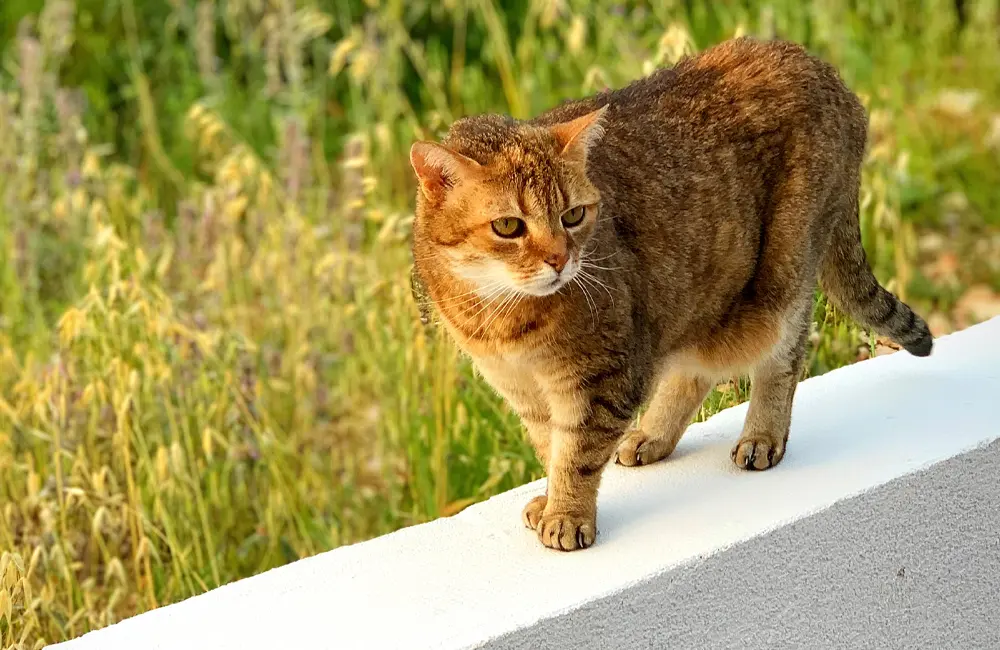So, you’re thinking about bringing a cute, cuddly kitten or a majestic, mature cat into your life – a decision that’s as exciting as a ball of yarn on a lazy Sunday afternoon! But why should you adopt? Well, aside from saving a life (cats in shelters crave for a loving family), you’ll also fight against animal cruelty. Some pet shops often don’t take the best care of cats, and by adopting, you’re not supporting these not-so-nice folks.

And hey, don’t rule out older cats! They may not be as bouncy as kittens but their calm demeanor and ‘been there, done that’ attitude will have you purring in no time. You’ll skip the crazy kitten phase and walk straight into the snuggly, cozy lap-cat stage. As they say, age ain’t nothing but a number!
This guide will cover everything from finding the right cat and understanding their needs to introducing them to their new home. By the end, you’ll be a cat adoption whiz, ready to give a lucky feline their forever home!
Assessing Your Lifestyle and Living Situation
Before you adopt a cat, it’s important to give your lifestyle a good, hard look – just like how a cat stares at a red laser dot! Cats, like us, have their own personalities. Some are social butterflies (or should we say, social caterpillars?), while others prefer a quiet, laid-back lifestyle. So, think about your daily routines and habits. Are you away from home often? Do you have a peaceful, quiet space, or is your home often bustling with activity? These are important points to consider, because your new feline friend will need to fit in with your lifestyle.
Choosing Between Adopting a Kitten or an Adult Cat
Now, let’s talk age. Kittens are like little balls of energy wrapped in fur. They’re curious, playful, and can turn a lazy afternoon into an entertaining spectacle. But remember, they also require more time, attention, and patience as they learn the house rules. Adult cats, on the other hand, are typically more settled and require less monitoring. They’re like that wise old uncle who has seen the world and now enjoys a good nap!
Researching Local Shelters and Rescue Organizations
Before you whisk away your very own whiskered friend, you’ll need to investigate local shelters and rescue organizations. Think of it as a detective mission, only fluffier! Like picking out your favorite flavor of ice cream, you want to find a place that feels right. Look up their missions and values, see if they have any reviews, and maybe even ask fellow cat lovers in your area for their recommendations. Remember, the cat’s out of the bag – adoption is the way to go, but you want to make sure you’re supporting an organization that treats their cats like the kings and queens they are.
Visiting Adoption Centers and Getting to Know Their Procedures
Once you’ve made a list of potential places, it’s time for a field trip! Visiting adoption centers is a bit like going to a cat party – you’ll meet all sorts of characters. While you’re there, observe how the cats are treated, and don’t be shy to ask about their adoption procedures. Some centers have a ‘get to know you’ period where you can play with potential fur-ever friends. It’s important to understand each center’s process to make sure it aligns with what you’re ready for. It’s like doing your homework, but way more fun!
You’ll also want to find out what their adoption fees are, what they include, and if there are any additional costs to consider. These fees typically cover vaccinations, spaying/neutering, and microchipping – all of which are important for your cat’s health and well-being.
How to Approach and Interact with Cats at Adoption Centers

Now you’ve made it to the adoption center, it’s time to meet some adorable potential fur-mates! Remember, first impressions matter, especially with cats. Approach them slowly and with respect, just like you’d approach the last slice of pizza. If a cat seems interested, extend your hand and let them sniff it. If they start purring or rubbing against you, congratulations! You’ve passed the sniff test. Feel free to gently pet them, but be ready to back off if they seem uncomfortable. It’s a bit like a dance, you have to read their signals and adjust your steps accordingly!
Questions to Ask Adoption Center Staff About the Cat’s History and Behavior
While you’re busy making friends, don’t forget to chat with the adoption center staff. They’re like the cat’s biographers, filled with information about their past and their behavior. Ask about the cat’s history, like where they came from, whether they’ve lived with other animals or kids, and any known medical issues. Also, inquire about their behavior. Are they social, or a bit more of a loner? Do they enjoy playing, or are they more of a lounge-on-the-couch type? The more you know, the better you can provide a home that will have your feline friend purring in contentment!
How to Know When You’ve Met Your Match
By now, you’ve found the right adoption center, and understand what type of cat would best fit your lifestyle. You’ve even met some potential fur-mates and gotten to know them a bit better. But how do you know when you’ve found ‘the one’? It’s like picking out shoes – when they fit just right, you’ll know. You’ll feel a strong connection, and it will be clear that this cat belongs in your home. It might not happen right away, but when it does, you’ll know.
Adopting Special Needs Cats
Embracing a special needs cat can be like unlocking a superhero’s origin story – they might have a few challenges, but wow, do they have some incredible strengths! Special needs can range from physical disabilities, like missing a limb or having vision or hearing impairments, to chronic health issues like diabetes. If you’re considering adopting a special needs cat, it’s important to understand their condition and the care they’ll need. It might be a bit more work, but the love and gratitude they pour onto you is immeasurable – think of it as getting VIP access to the most exclusive purring session!
Adopting Bonded Pairs or Multiple Cats
Consider this: What’s better than adopting one cat? Adopting two, of course! Sometimes, cats form deep bonds with each other, often siblings or just friends who’ve shared past experiences. Separating them can be like breaking up a band – it’s just not the Beatles without Paul and John. Adopting a bonded pair means they’ll have a companion to play and cuddle with, and you’ll get double the love and fun. Sure, it’s a bit more responsibility, but the rewards are twice as nice!
Giving Senior Cats a Chance

Senior cats are like the grandparents of the cat world – they’ve seen it all, they’ve done it all, and now they just want to chill with someone they love. They’re usually more relaxed, less destructive, and they’ve grown out of those crazy kitten years. While they might need a bit more medical attention as they age, adopting a senior cat can bring a calm and soothing presence to your home. Plus, giving a senior cat a loving home for their golden years is a heartwarming act of kindness that they’re sure to repay with lots of cuddles and purrs.
The Adoption Process Unveiled
Getting down to the nitty-gritty, the adoption process can be more formal than a royal tea party. It typically kicks off with filling out adoption applications and paperwork. It’s a bit like a pop quiz, but don’t worry, there’s no wrong answer! They just want to ensure you’re ready to provide a loving home for their feline residents.
In some cases, the adoption centers may require home visits and interviews. This might sound like a job interview, but it’s more of a casual meet-and-greet – it’s their way of making sure your home is cat-ready and that you understand the responsibilities of being a fur-parent. Think of it as getting your house cat-approved!
Once you’ve crossed these off the list, it’s time to prepare for the big adoption day. It’s like prepping for a birthday party – with less cake and more cat toys. Make sure you’ve got everything you need: a litter box, cat food, a comfy bed, and lots of love to give. The day you bring your new cat home is a day to celebrate – it’s the start of a purrfect friendship!
Transitioning Your Cat to Their New Environment
The first thing you need to remember is that moving day can be a bit scary for our feline friends. Just like you on your first day at a new school, they might be a little nervous. To make things easier, prepare a quiet and comfy room where your new cat can relax and explore at their own pace. Place their food, water, litter box, and some toys in this room. It’s like their very own cat hotel room! Give them some time to sniff around and get used to their new digs before introducing them to the rest of the house.
Introducing Your New Cat to Existing Pets
If you have other pets at home, introductions should be done slowly and carefully, kind of like introducing a new superhero to an established team—they need to figure out who’s who and how they fit into the dynamic. Start by letting your pets sniff each other’s items (like beds or toys) before they meet face-to-face. When you feel it’s time for a proper introduction, make sure to supervise their interactions and keep things positive and calm.

The Importance of Patience During the Adjustment Period
Just like a new jigsaw puzzle, it can take a while to figure out where all the pieces fit. Your new cat may take some time to adjust to their new surroundings and their new family. That’s totally normal. It’s important to be patient, and understanding, and give them the space they need. With time, they’ll start to feel more comfortable and show their true, lovable self. It’s like waiting for a flower to bloom – once it does, it’s a beautiful sight to behold!
Building a Strong Bond
Building a bond with your new feline friend is like starting a new friendship—it takes time, patience, and a whole lot of love. Here are a few tips to help you win over kitty’s heart. First, respect their space. Cats are a bit like celebrities—sometimes they want their alone time, and that’s okay. Let them come to you when they’re ready for some affection. Second, learn their language. Unlike humans, cats don’t use words to communicate. Instead, they express themselves with purrs, meows, and body language. So, it’s time to become a cat whisperer and decode what they’re saying!
Engaging in Play and Social Interaction
Cat playtime isn’t just fun—it’s also an important bonding experience. It’s like a game of tag on the playground but with fur and whiskers. Remember, every cat is an individual with their own favorite toys and games. Some might enjoy a laser pointer chase, while others might prefer a good old-fashioned ball of yarn. Experiment to find what your cat loves most, and make sure to set aside some playtime every day. This will not only keep them active and healthy, but it will also strengthen your bond with them.
Fostering Trust and Creating a Loving Relationship
Trust is the foundation of any good relationship, including the one with your cat. Be consistent with your care and show them loads of love, and soon enough, they’ll see you as their trusted human. It’s like being the best friend who’s always there for them, no matter what. Remember, small gestures can go a long way in building trust. Regular feeding, gentle petting, and responding to their cues will show your cat that they can rely on you. And once the trust is there, a loving and rewarding relationship will blossom. It’s like growing a beautiful catnip plant from a single seed—nurture it, and it will flourish!
Conclusion
Adopting a cat isn’t just about bringing home a cute furball—it’s about embarking on a rewarding journey that’s bound to be filled with moments of laughter, joy, and plenty of purrs. It’s like starting a new, exciting chapter of your life, but with whiskers and a tail! And the best part? You’re providing a forever home for a feline friend who is just as deserving of love and happiness as any other creature on this planet. It’s like playing superhero, but instead of a cape, your superpower is kindness!
The Catington Post is reader-supported. That means, if you make a purchase through links on our site, we may earn an affiliate commission. All images and names which are not the property of The Catington Post are the property of their respective owners.






